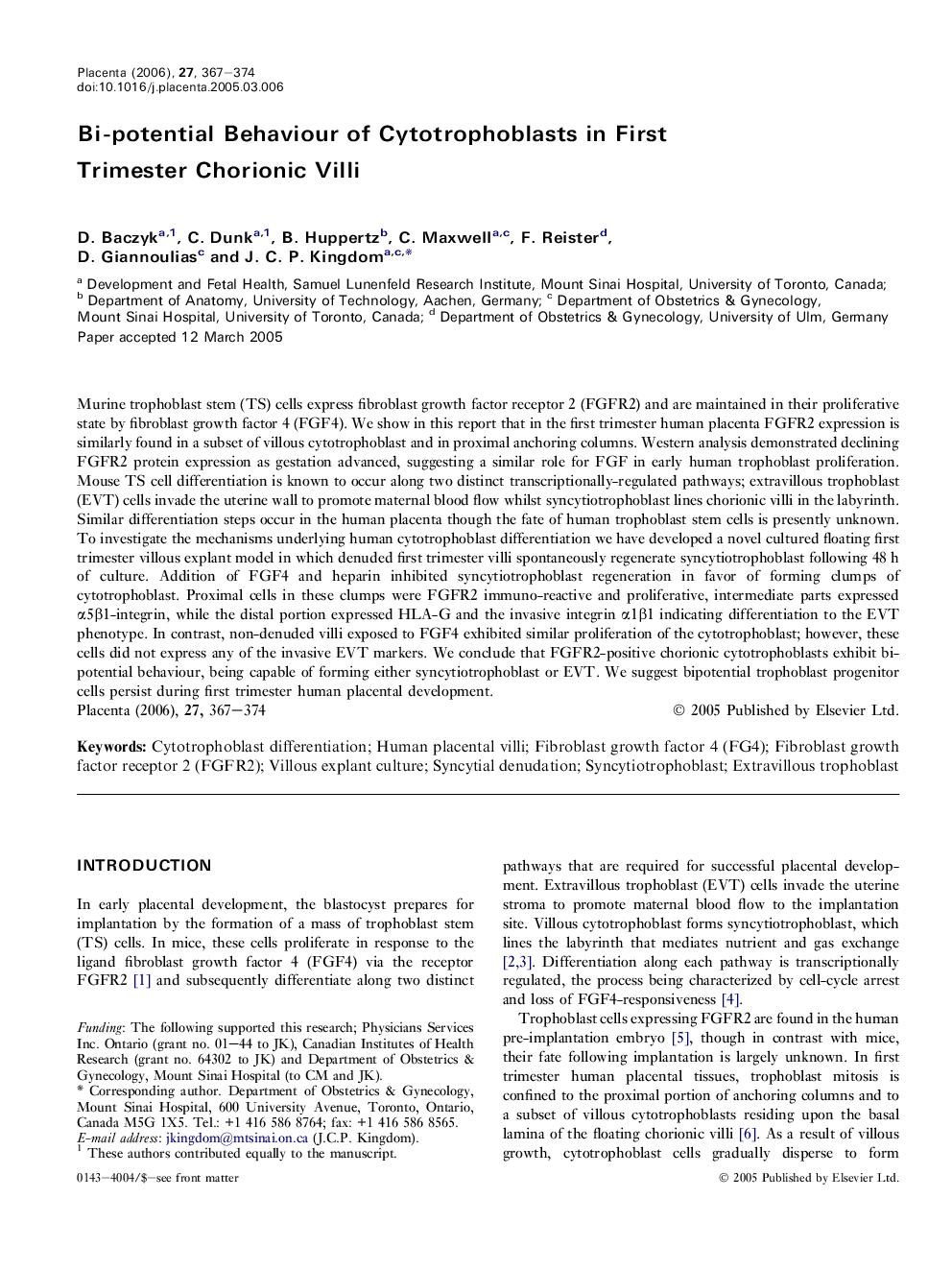| کد مقاله | کد نشریه | سال انتشار | مقاله انگلیسی | نسخه تمام متن |
|---|---|---|---|---|
| 2790366 | 1568580 | 2006 | 8 صفحه PDF | دانلود رایگان |

Murine trophoblast stem (TS) cells express fibroblast growth factor receptor 2 (FGFR2) and are maintained in their proliferative state by fibroblast growth factor 4 (FGF4). We show in this report that in the first trimester human placenta FGFR2 expression is similarly found in a subset of villous cytotrophoblast and in proximal anchoring columns. Western analysis demonstrated declining FGFR2 protein expression as gestation advanced, suggesting a similar role for FGF in early human trophoblast proliferation. Mouse TS cell differentiation is known to occur along two distinct transcriptionally-regulated pathways; extravillous trophoblast (EVT) cells invade the uterine wall to promote maternal blood flow whilst syncytiotrophoblast lines chorionic villi in the labyrinth. Similar differentiation steps occur in the human placenta though the fate of human trophoblast stem cells is presently unknown. To investigate the mechanisms underlying human cytotrophoblast differentiation we have developed a novel cultured floating first trimester villous explant model in which denuded first trimester villi spontaneously regenerate syncytiotrophoblast following 48 h of culture. Addition of FGF4 and heparin inhibited syncytiotrophoblast regeneration in favor of forming clumps of cytotrophoblast. Proximal cells in these clumps were FGFR2 immuno-reactive and proliferative, intermediate parts expressed α5β1-integrin, while the distal portion expressed HLA-G and the invasive integrin α1β1 indicating differentiation to the EVT phenotype. In contrast, non-denuded villi exposed to FGF4 exhibited similar proliferation of the cytotrophoblast; however, these cells did not express any of the invasive EVT markers. We conclude that FGFR2-positive chorionic cytotrophoblasts exhibit bi-potential behaviour, being capable of forming either syncytiotrophoblast or EVT. We suggest bipotential trophoblast progenitor cells persist during first trimester human placental development.
Journal: Placenta - Volume 27, Issues 4–5, April–May 2006, Pages 367–374